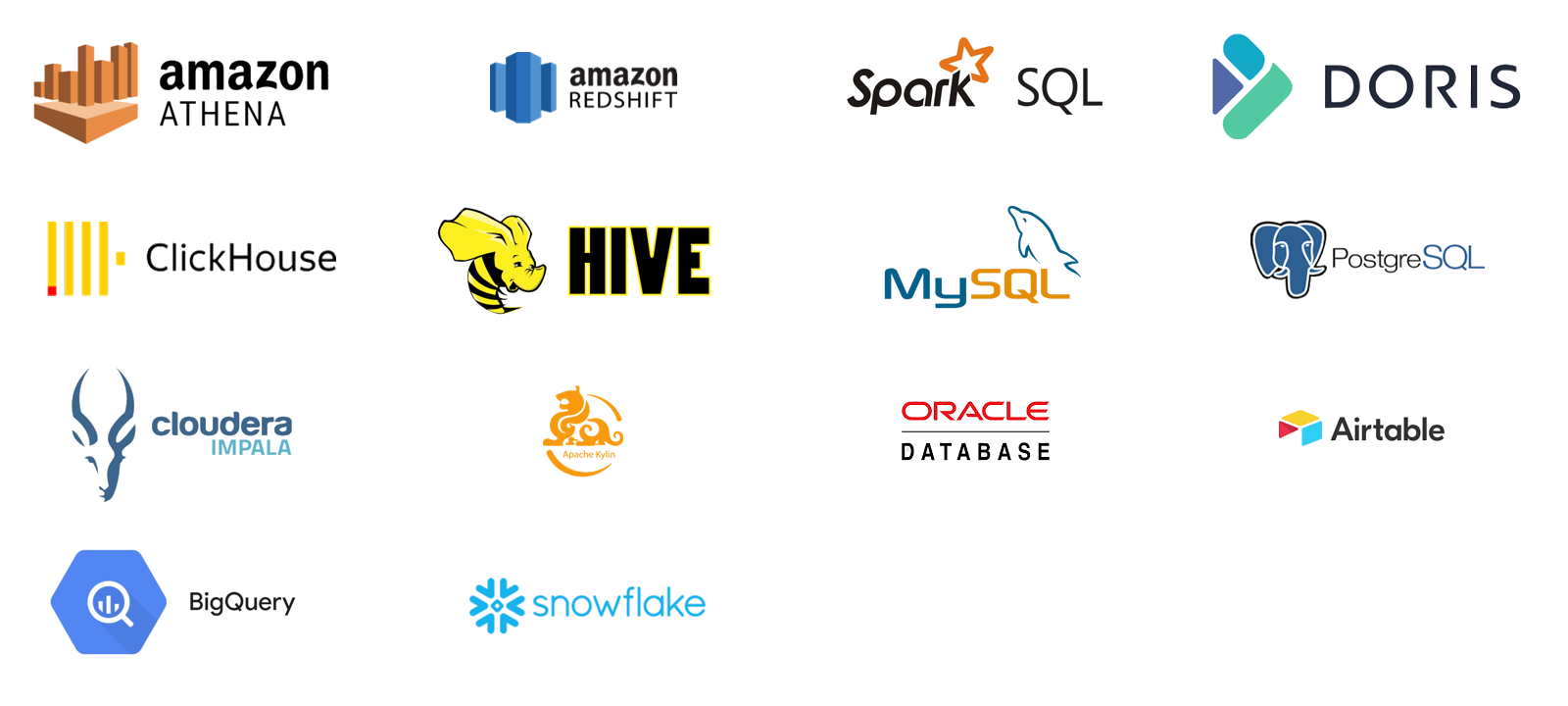Streamline Data Cleansing with ChatGPT
Updated on

Data cleansing is a vital step in the data analysis process. It involves identifying and correcting errors, inconsistencies, and inaccuracies in data to improve its quality and usefulness for analysis. In this article, we'll explore the differences between data cleansing and data cleaning, provide examples of data cleansing, and discuss best practices for data cleansing using tools such as Excel and Python. We'll also highlight the importance of data cleansing for data visualization and introduce ChatGPT, an AI-powered tool that can streamline the data cleansing process.
Importance of Data Cleansing
Data cleansing is an essential process that plays a crucial role in ensuring the accuracy, consistency, and reliability of your data. Without proper data cleansing, your data may contain errors, duplicates, inconsistencies, and inaccuracies that could compromise the quality of your analysis and decision-making. Other benefits include:
- Improved Accuracy and Reliability
- Cost Savings
- Improved Data Visualization
Data Cleansing vs. Data Cleaning
Before we dive into the specifics of data cleansing, let's clarify the difference between data cleansing and data cleaning. While these terms are often used interchangeably, there is a subtle distinction between the two:
- Data cleaning refers to the process of identifying and correcting errors in data, such as misspellings or formatting inconsistencies.
- Data cleansing, on the other hand, encompasses a broader range of activities, including data cleaning as well as the identification and removal of duplicates, incomplete records, and irrelevant data.
Data Cleansing Examples
To better understand data cleansing, let's look at some examples. Suppose you have a dataset containing information about customers, including their names, address, and purchase history. Here are some examples of data-cleansing tasks you might perform:
- Filling in missing values: If some records are missing a customer's address, you could use external data sources or interpolation methods to fill in the missing values.
- Identifying duplicates: If there are multiple records with the same name and address, you could use algorithms to identify and remove duplicates.
- Correcting inconsistent data: If some records have misspelled names or inconsistent formatting (e.g., using both "St." and "Street" for the same address), you could use data cleaning techniques to correct the errors.
Use ChatGPT for Data Cleansing
Let's say you have been given a dataset containing customer information for a retail company. The dataset has the following columns: customer ID, name, email address, phone number, and purchase history. Upon inspection of the data, you notice that several issues need to be addressed before you can perform any meaningful analysis. One issue is that the names are not consistently formatted - some are all lowercase, some are all uppercase, and some have inconsistent capitalization. To clean this data in Excel, you could use the functions TRIM, UPPER, and PROPER. But we can automate the process with ChatGPT instead by creating a Python code for us.
Here's an example of how you might use Python's Pandas library to clean the phone number column in the sample dataset that I provided earlier:
Sample input:
Here is a dataset with customer information that needs to be cleaned. The phone numbers are not consistent - some use parentheses and dashes, while others use only dashes or no punctuation at all. Generate a Python code for me.
| ID | Name | Email | Phone |
|----|------------------|-------------------------------|----------------|
| 1 | John Smith | john.smith@example.com | (555) 555-1234 |
| 2 | Jane Doe | jane.doe@example.com | 555-555-5678 |
| 3 | Michael Johnson | michael.johnson@example.com | (555) 555-7890 |
| 4 | Sarah Williams | sarah.williams@example.com | 5555552345 |
| 5 | David Brown | david.brown@example.com | 555.555.6789 |In the response, ChatGPT generates the following Python code:
import pandas as pd
# load the dataset
import pandas as pd
# load the dataset
df = pd.read_csv('customer_information.csv')
# clean the phone numbers column
df['Phone'] = df['Phone'].str.replace('[-(). ]', '').str.replace('^1?(\d{3})(\d{3})(\d{4})$', r'(\1) \2-\3')
# save the cleaned dataset
df.to_csv('cleaned_customer_information.csv', index=False)In this example, we're using the read_csv() method from the Pandas library to load the dataset into a Pandas DataFrame. We're then using the str.replace() method to remove any non-numeric characters (including parentheses, dashes, spaces, and periods) from the phone numbers. After that, we're using regular expressions with the str.replace() method to format the phone numbers using parentheses and dashes. Finally, we're using the to_csv() method to save the cleaned dataset to a new CSV file called 'cleaned_customer_information.csv'.
The cleaned dataset will look like this:
| ID | Name | Email | Phone |
|----|------------------|-------------------------------|----------------|
| 1 | John Smith | john.smith@example.com | (555) 555-1234 |
| 2 | Jane Doe | jane.doe@example.com | (555) 555-5678 |
| 3 | Michael Johnson | michael.johnson@example.com | (555) 555-7890 |
| 4 | Sarah Williams | sarah.williams@example.com | (555) 555-2345 |
| 5 | David Brown | david.brown@example.com | (555) 555-6789 |Discover AI-powered Data Analysis with RATH Copilot
Struggling with overwhelming data and clunky BI tools can be a nightmare. But with RATH, you can say goodbye to the chaos and hello to effortless data analysis.
RATH (opens in a new tab) integrates ChatGPT into your data analysis workflow, acting as your 24/7 personal data analyst, streamlining your workflow and boosting your productivity. Get instant insights and stunning visualizations without the hassle.
Get Instant Insight with No Code
The workflow is stunningly simple:
- Connect Your Data Source to RATH
- Ask Any Question
- You can get instant Data Insights and Visualizations within seconds.
Everything is done with natural language, with no code required. Check out this awesome Demo about investigating the relationship between Bitcoin price and Gold price in history, by simply talking to RATH:
You can see how RATH easily extracts data from multiple sources and uses natural language to help you explore and understand your data.
Turbocharge Your Productivity
And say goodbye to data processing headaches!
Small teams often struggle with SQL queries and data processing, especially without a dedicated data analyst or technical skills. That's where RATH comes in to save the day.
RATH makes it easy for small teams to handle data processing using simple everyday language. Any team member can ask RATH for the information they need, and they'll quickly get useful insights and visualizations. This way, teams can focus on making the most of their data instead of struggling to get it.
Seamless Workflow Integration
RATH supports a wide range of data sources that does not disturb your existing workflow. Here are some of the major database solutions that you can connect to RATH:

We are about to launch the support for AirTable Integration. You can easily visualize your AirTable data with Natural Languages! Simply connect RATH to your AirTable data, and watch the magic happen:
Interested? Inspired? Unlock the insights of your data with one prompt: ChatGPT-powered RATH is Open for Beta Stage now! Get onboard and check it out!
Data Cleaning in Excel
Excel is a popular tool for data analysis, and it includes several features that can help with data cleaning. Here are the basic steps for cleaning data in Excel:
- Identify the data to clean: This might involve sorting the data by a particular column or using filters to view specific records.
- Identify errors: Use Excel's built-in tools, such as the "Conditional Formatting" feature, to highlight errors in the data.
- Correct errors: Manually correct errors or use Excel's built-in functions, such as "Find and Replace," to make corrections.
- Validate results: Verify that the corrections were successful and that the data is now clean.
Data Cleaning in Python
Python is a powerful programming language with a rich set of libraries for data analysis and manipulation. Here are the basic steps for cleaning data in Python using the pandas library:
- Load the data: Use the pandas library to load the data into a pandas dataframe.
- Identify errors: Use pandas functions, such as
isnull()or "duplicated()", to identify missing or duplicate data. - Correct errors: Use pandas functions, such as
fillna()or "drop_duplicates()", to correct missing or duplicate data. - Validate results: Verify that the corrections were successful and that the data is now clean.
Data Cleansing in ETL
ETL, or extract, transform, load, is a process for integrating data from multiple sources into a single, usable format. Data cleansing is a critical step in the ETL process, as it ensures that the data is accurate and consistent across all sources. During the "transform" phase of ETL, data cleansing is performed to ensure that the data is in the correct format and that any errors or inconsistencies are corrected.
Data Cleansing Best Practices
Now that we understand the importance of data cleansing, let's take a look at some best practices for data cleansing.
Start with a Data Quality Assessment
Before you begin cleansing your data, it's essential to understand the quality of your data. A data quality assessment helps to identify errors, inconsistencies, and inaccuracies in your data, allowing you to prioritize your cleansing efforts.
Use the Right Tools
There are several tools available for data cleansing, including Excel, Python, and Salesforce. These tools can help you to identify duplicates, inconsistencies, and inaccuracies in your data, making it easier to clean and improve the quality of your data.
Define Data Cleansing Rules
Defining data cleansing rules is essential for ensuring consistency and accuracy in your cleansing efforts. Data cleansing rules outline the specific criteria that must be met for data to be considered clean and accurate.
Regularly Monitor and Update Your Data
Data cleansing is not a one-time process. To ensure the ongoing accuracy and reliability of your data, it's essential to regularly monitor and update your data. This helps to identify and correct errors, inconsistencies, and inaccuracies as they arise, ensuring that your data remains clean and accurate.
Conclusion
Data cleansing is an essential process that helps to improve the accuracy, consistency, and reliability of your data. By identifying and correcting errors, inconsistencies, and inaccuracies in your data, you can make more informed decisions and achieve better business outcomes. By following best practices for data cleansing, you can ensure that your data remains clean and accurate, providing you with a reliable foundation for your analysis and decision-making.
